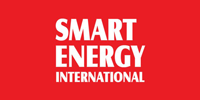
This year new global installed utility-scale energy storage capacity will reach 1242MW, according to a report by Navigant Research.
The study has identified that 10 countries will account for 80% of this amount. They are the US, France, Germany, the UK, Australia, China, India, Japan, South Korea, and Brazil.
The report, Country Forecasts for Utility-Scale Energy Storage, provides forecasts for utility-Scale systems deployed globally in terms of power capacity (MW), energy capacity megawatt hour), and revenue generated from the development of new projects in 26 countries worldwide.
With the emergence of new markets and applications, 2018 represented the largest year on record for new energy storage capacity, Navigant’s study found.
Despite this growth, however, the market remains concentrated in a relatively small number of countries with the right policies, market structures, regulations, and renewable energy deployments, according to the analyst outfit.
Navigant senior research analyst Alex Eller said: “In terms of applications for new utility-scale energy storage projects, solar-plus-storage has emerged as a major opportunity and driver of new growth.
“The rapidly falling costs for both technologies have made combined solar-plus-storage plants economically competitive against conventional fossil fuel plants in a growing number of markets, which allows a solar plant to be a predictable resource for grid operators.”
Despite the growth in new renewable energy shifting projects, the shorter duration grid stability applications remain the foundation for many emerging markets, according to Navigant.
The analyst has identified a general pattern as energy storage markets mature, transitioning from these shorter duration stability applications, such as frequency regulation, to longer duration bulk storage services such as renewable energy shifting and transmission and distribution asset optimisation.
read more











